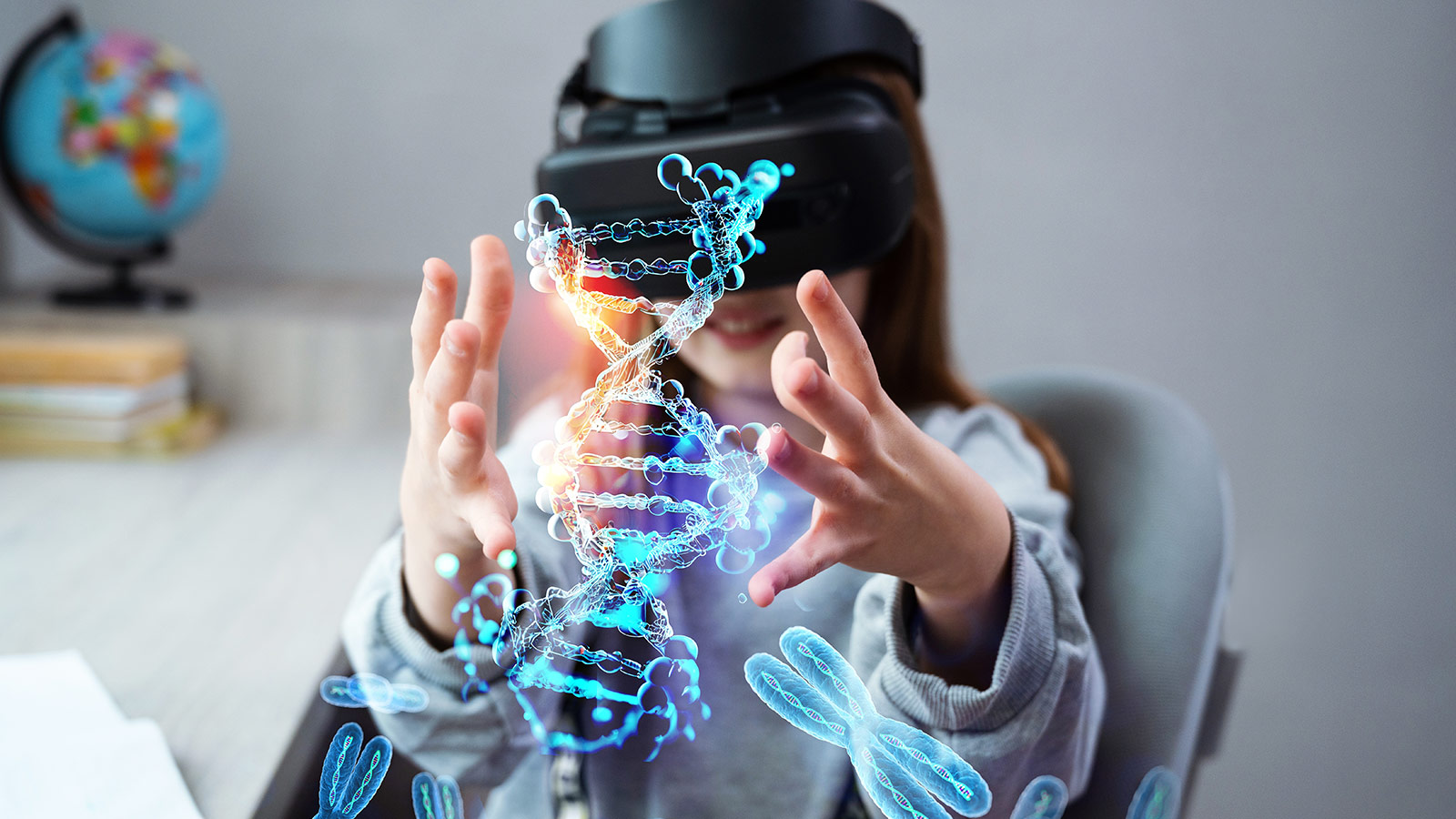Walk into an IT classroom in 2025, and you might see something unexpected. Not rows of desktops and clacking keyboards, but students wearing VR headsets, moving through virtual networks, or collaborating with peers in a shared 3D workspace.
This isn’t sci-fi anymore. XR (Extended Reality) — a blend of augmented, virtual, and mixed reality technologies — is officially reshaping how we teach and learn IT.
From troubleshooting a server in a simulated data centre to tracing a network map by physically walking its route, XR is helping learners visualise complex systems, practice hands-on skills, and engage with content in an entirely new way.
Let’s break down why XR classrooms are on the rise, how they’re being used in IT education, and what it means for the next generation of tech learners.
Why XR Now?
The timing is no accident. Several trends are converging:
- Remote learning fatigue: After years of Zoom-based learning, educators are seeking more engaging ways to teach practical tech skills.
- Hardware accessibility: VR headsets and AR-enabled devices are becoming more affordable and classroom-ready.
- Curriculum demand: As cloud computing, cybersecurity, and hardware troubleshooting grow in complexity, traditional training methods are struggling to keep up.
- Workforce alignment: Employers are investing in XR to train their own teams — and they want graduates who are already fluent in immersive environments.
How XR Is Being Used in IT Training
So, what does this actually look like in a course or bootcamp?
1. Virtual Cloud Labs
Imagine walking through a visual representation of cloud architecture, interacting with virtual servers, and deploying containers in a simulated AWS environment. XR makes abstract concepts more concrete.
2. Network Simulation and Troubleshooting
Rather than memorizing command lines, students can identify and resolve issues in a virtual network by physically moving through a topology map, spotting broken connections, and applying fixes in real-time.
3. Hardware and Device Practice
Can’t get your hands on every type of router, server, or cable? XR provides realistic 3D models of hardware setups for learners to disassemble, rewire, and troubleshoot.
4. Soft Skills and Team-Based Scenarios
Some platforms are even simulating service desk scenarios, where learners must communicate with a virtual colleague, explain a problem clearly, and demonstrate soft skills alongside technical know-how.
5. Assessment Through Simulation
Instructors can now assess performance through scenario-based XR labs rather than quizzes alone. It’s about doing, not just knowing.
What Students Are Saying
Ella, a 19-year-old CompTIA student, shared: “I used to just guess what subnets looked like. In the VR lab, I actually saw the traffic routes. It clicked instantly.”
Meanwhile, Marcus, a career-changer in his 30s, said XR helped him build confidence: “I’d never opened a server before, and now I’ve done it 10 times in virtual labs. I’m not nervous for the real thing anymore.”
Benefits of XR Learning in Tech
- Improved retention: When students can see and manipulate what they’re learning, they tend to remember it.
- Greater accessibility: Students in remote or underserved areas can now experience high-quality labs without needing expensive hardware on site.
- Faster mastery: Immediate feedback in immersive settings helps learners build skills quickly and with less repetition.
- Better prep for real jobs: As companies adopt XR for internal training, students fluent in it gain a competitive edge.
Barriers to Widespread Adoption
Despite the momentum, there are still hurdles:
- Cost: While cheaper than a full lab buildout, VR setups can still be expensive for some schools.
- Training for trainers: Instructors need time and support to adapt their courses to immersive formats.
- Motion sickness and accessibility concerns: Not every learner thrives in XR, and inclusive design must be a priority.
Still, these challenges are being met with innovation. Cloud-based XR, cross-platform compatibility, and more intuitive user interfaces are making adoption easier each year.
What It Means for the Future
XR isn’t here to replace traditional IT education. It’s here to enhance it. Just like simulators changed how we train pilots, immersive labs are adding a new dimension to how we prepare the next generation of tech professionals.
In the next few years, expect to see:
- XR modules embedded into core IT certifications
- Mixed-reality study groups collaborating from different geographies
- AI-driven XR labs that adapt to individual strengths and weaknesses
Final Thoughts: The Headset Is Just the Beginning
As learning moves beyond the screen and into 3D, IT education is getting more human, not less. XR allows learners to experience what they’re studying, to make mistakes safely, and to gain the kind of muscle memory that sticks.
At Ascend Education, we believe the future of tech training is immersive, inclusive, and incredibly exciting. XR classrooms are just one part of a bigger movement: learning that adapts, engages, and empowers learners at every level.






